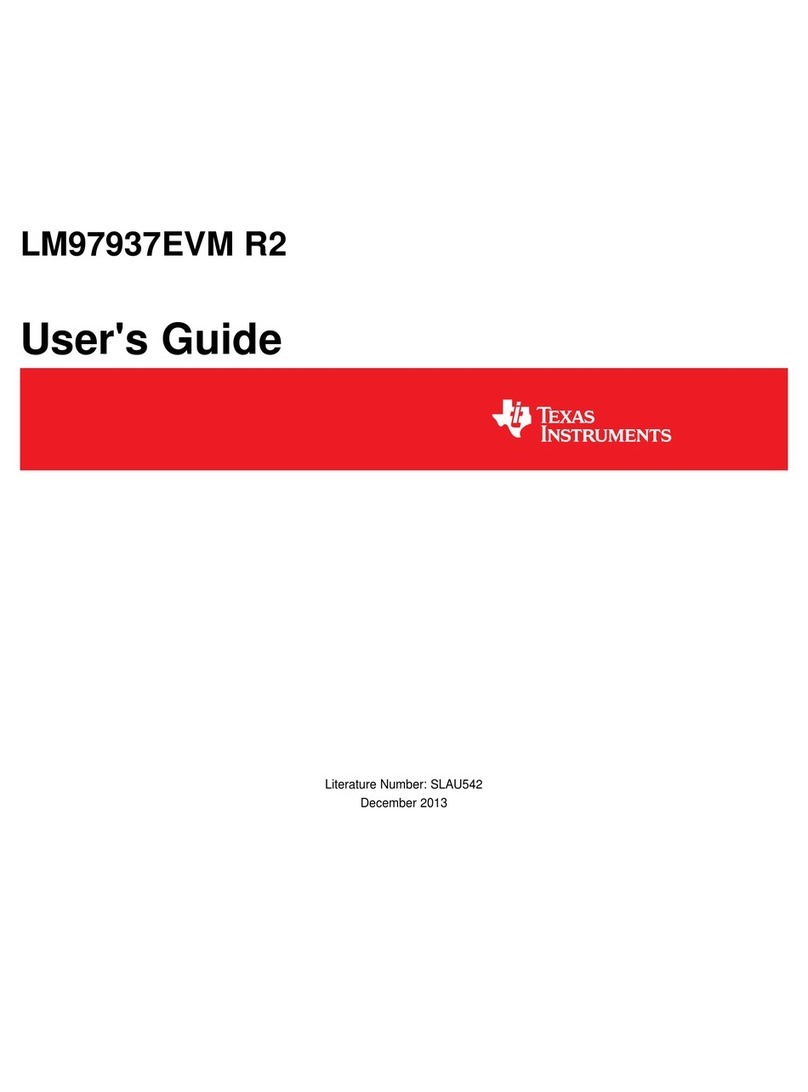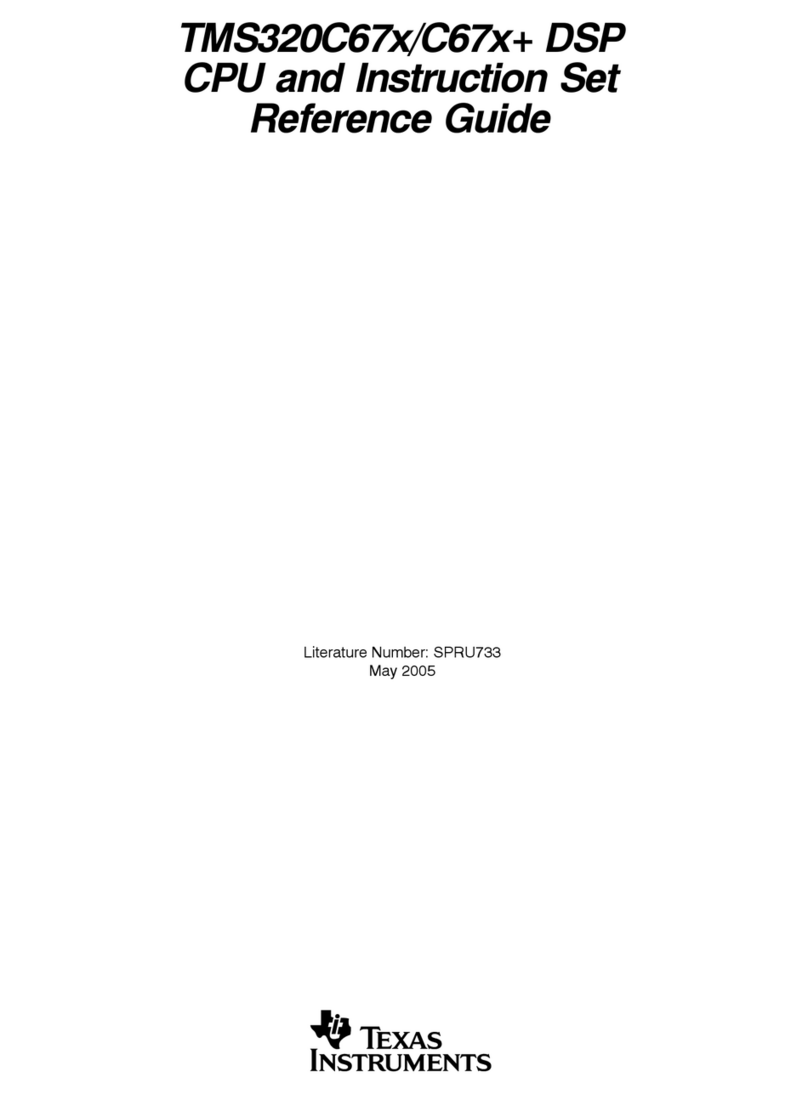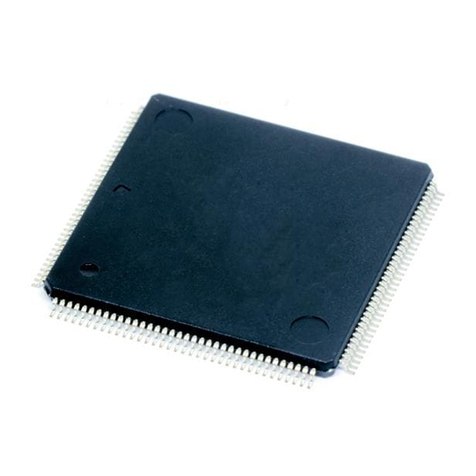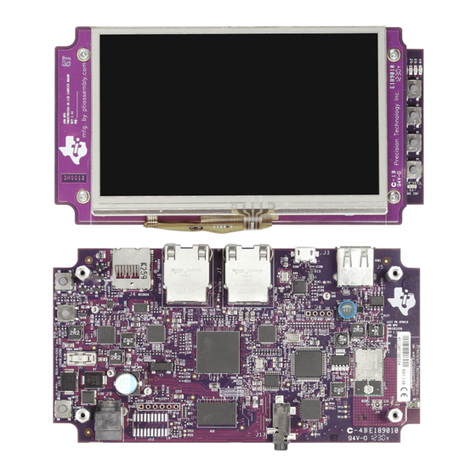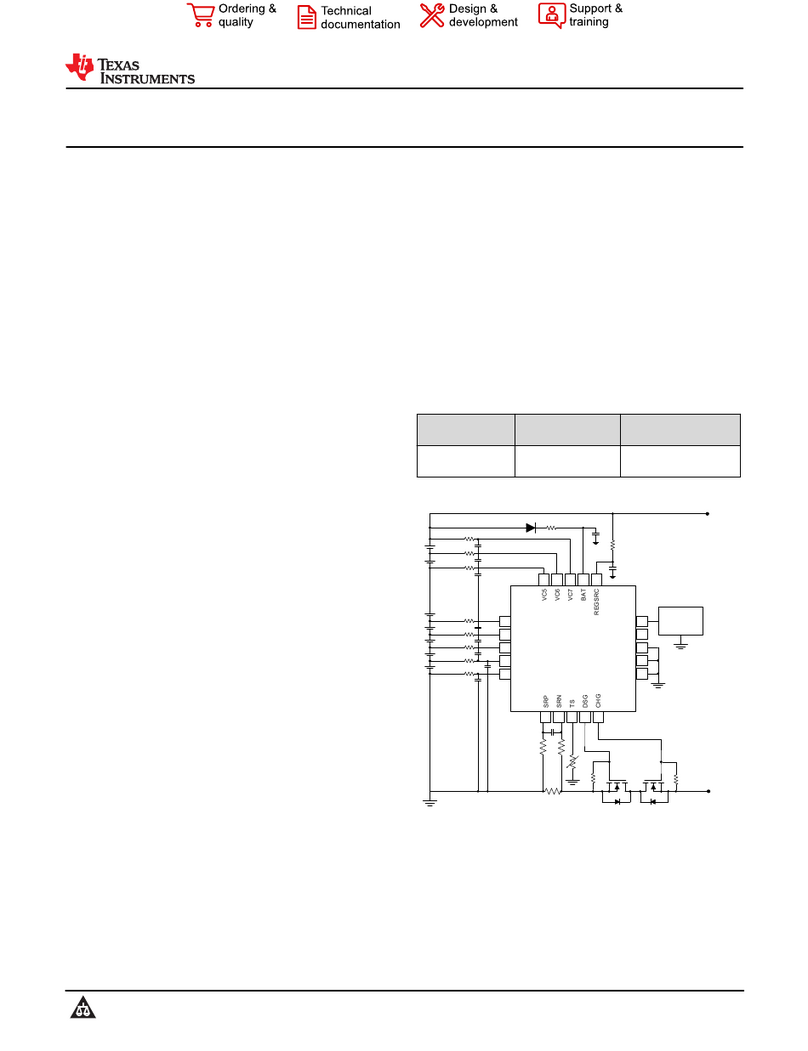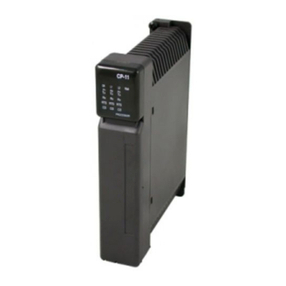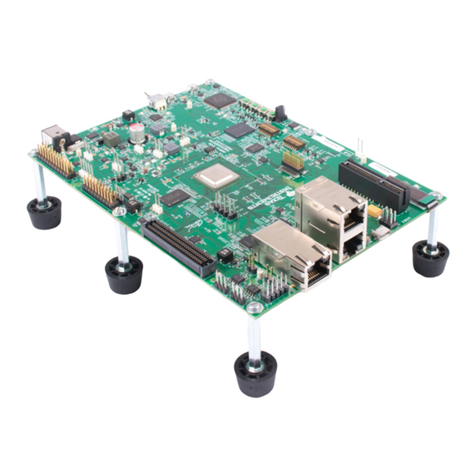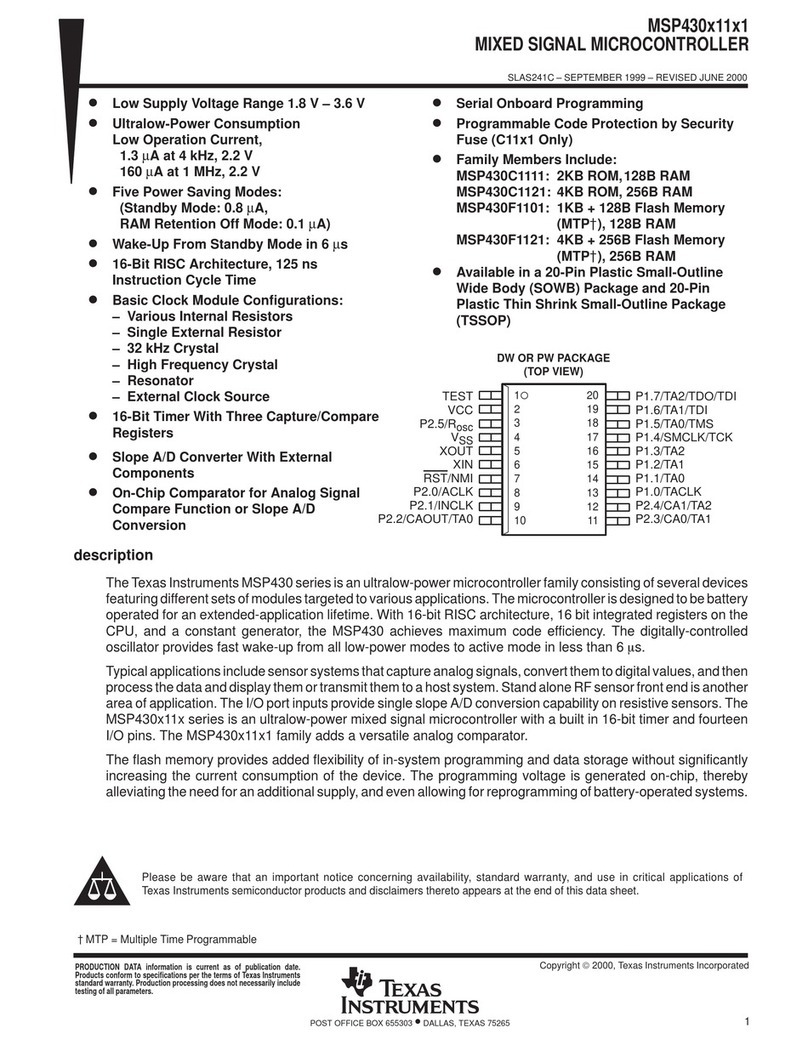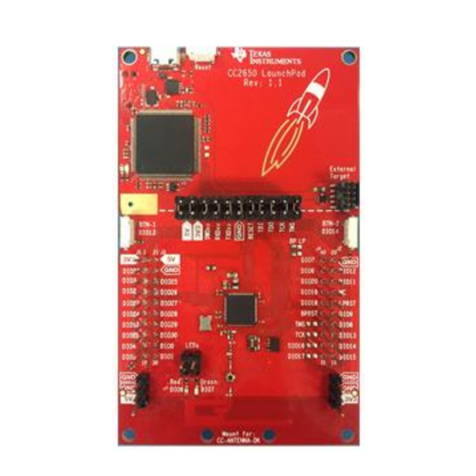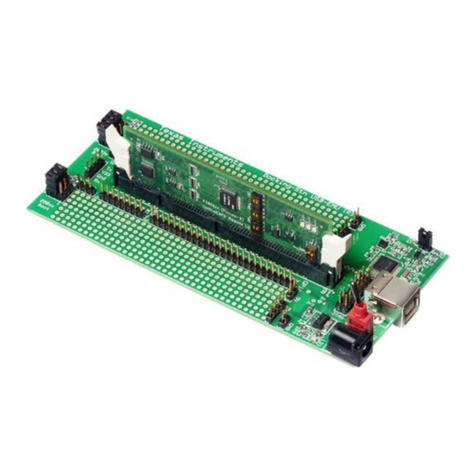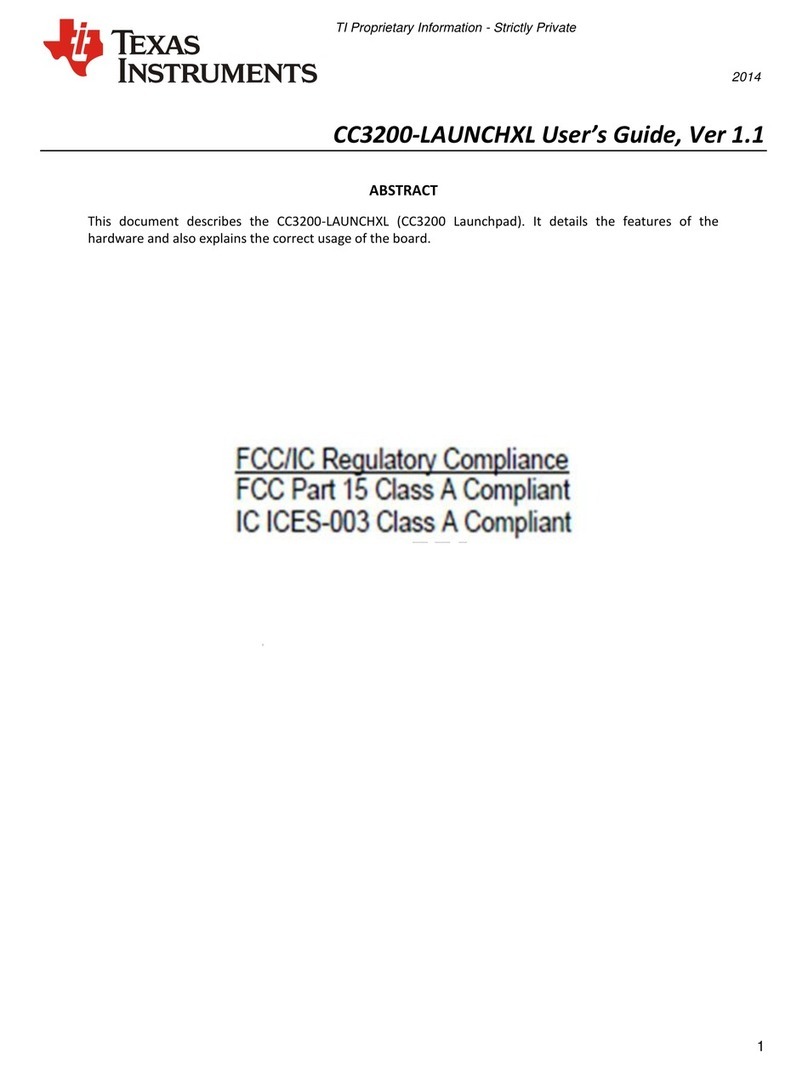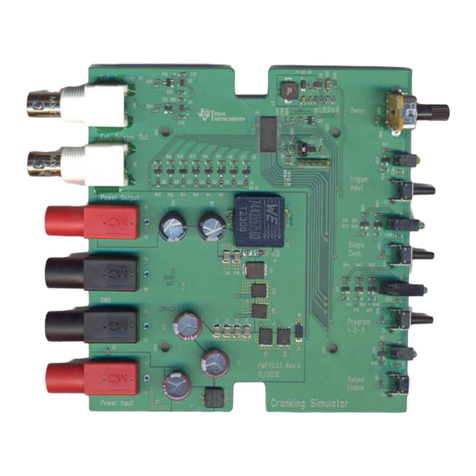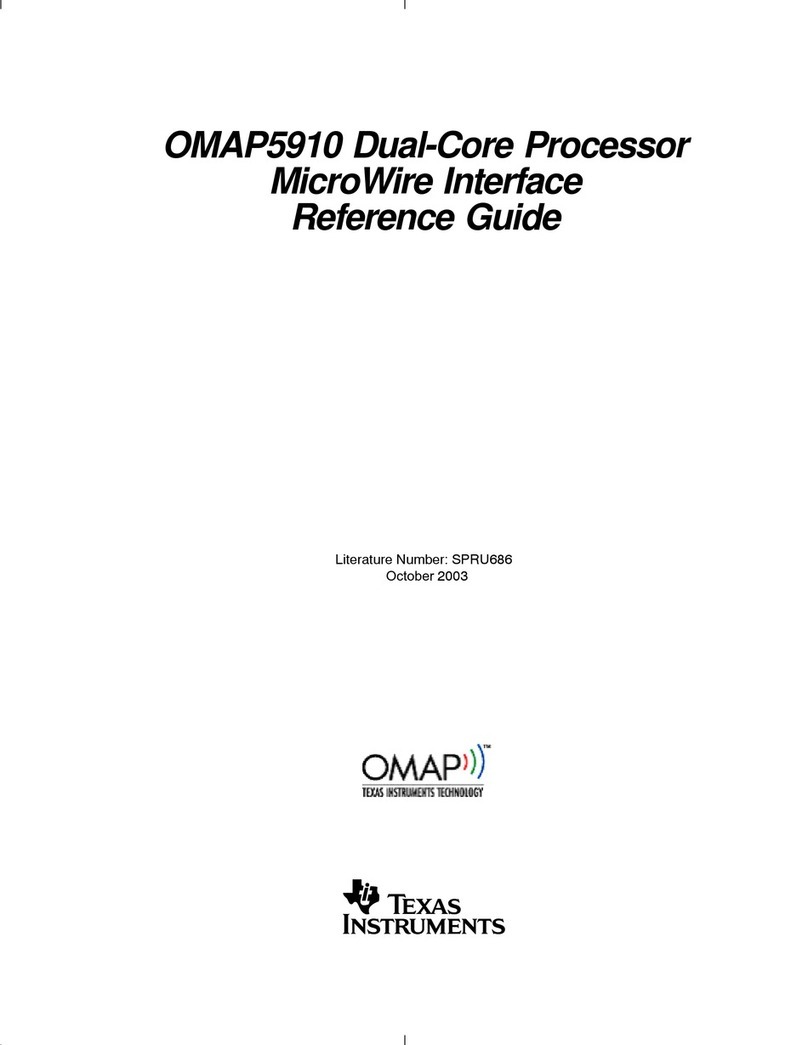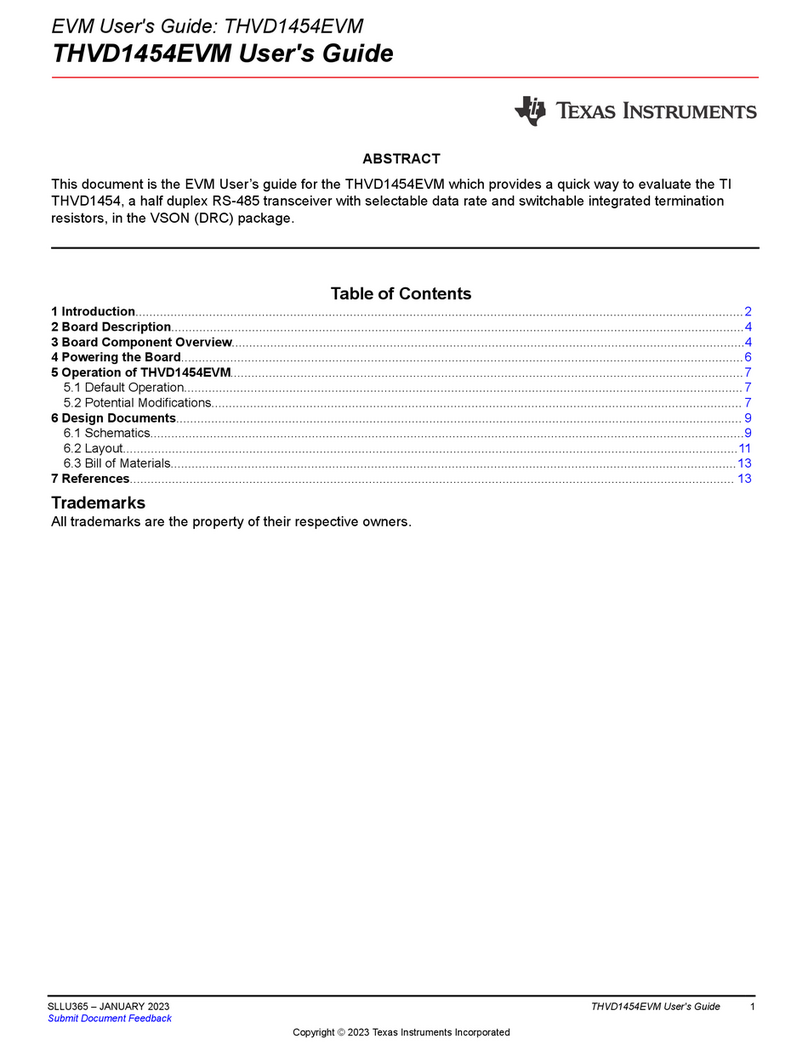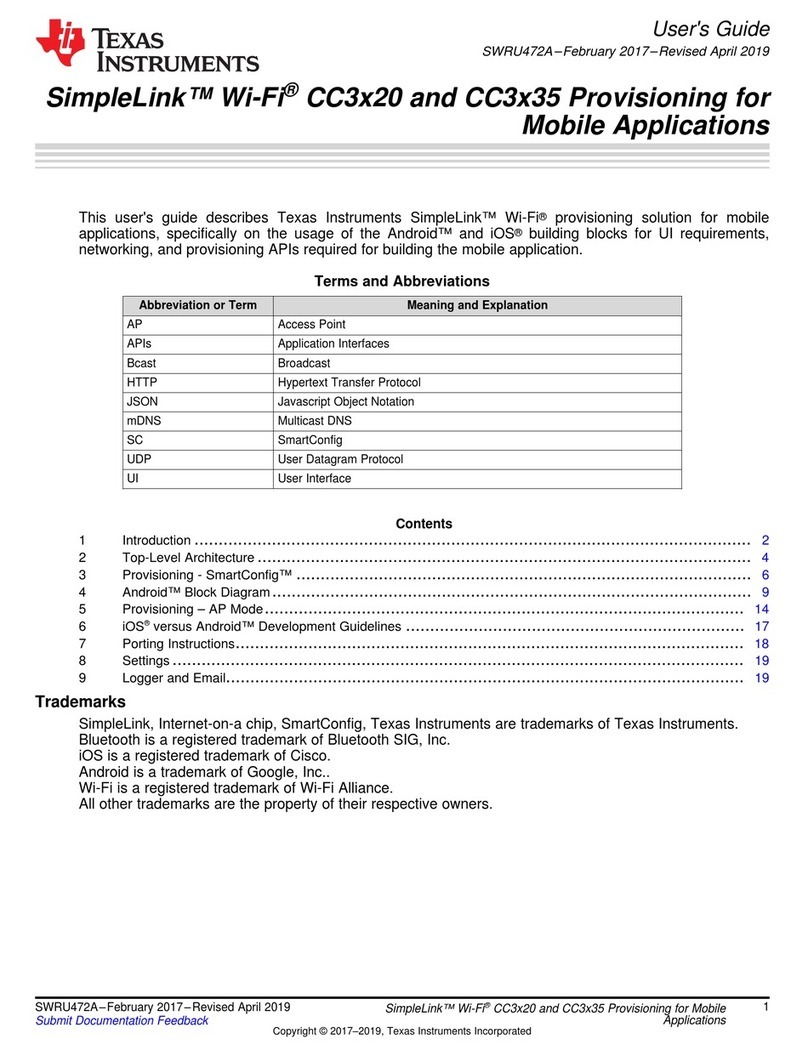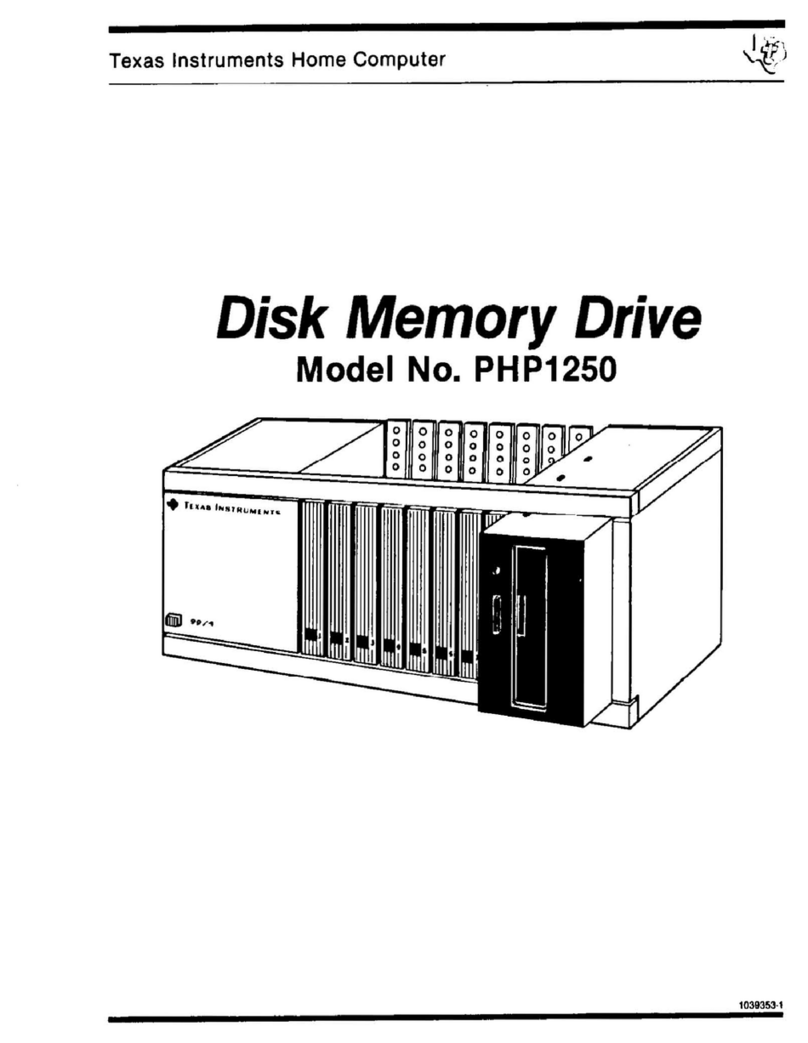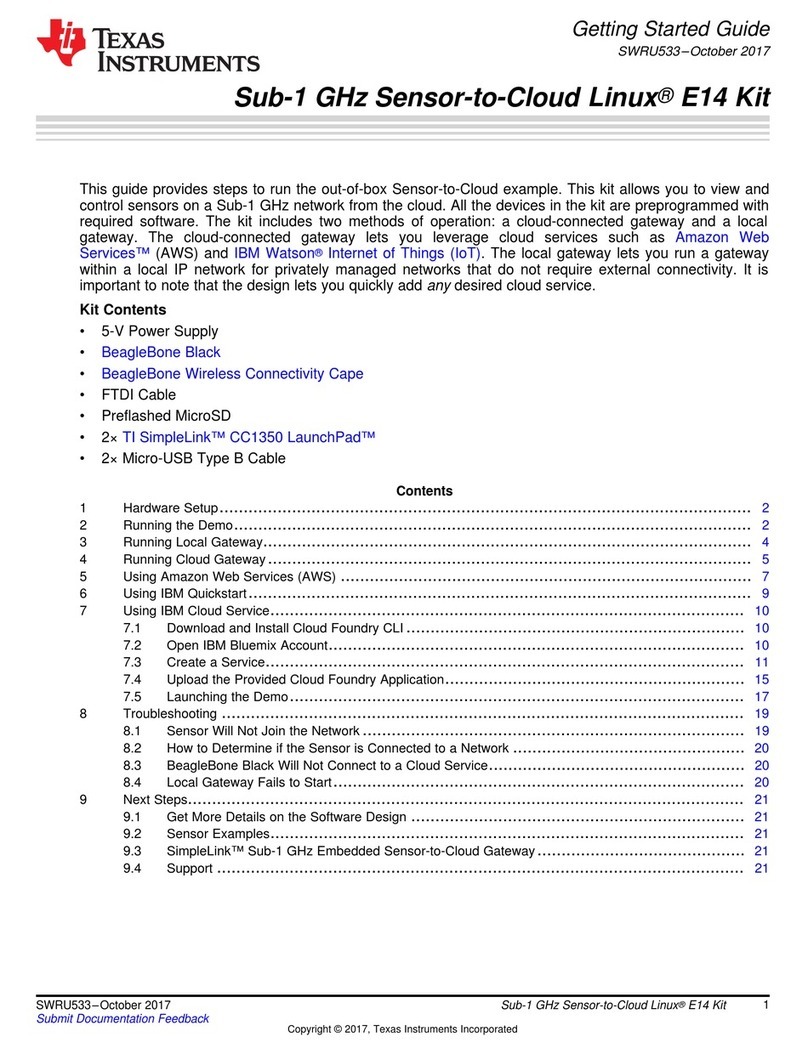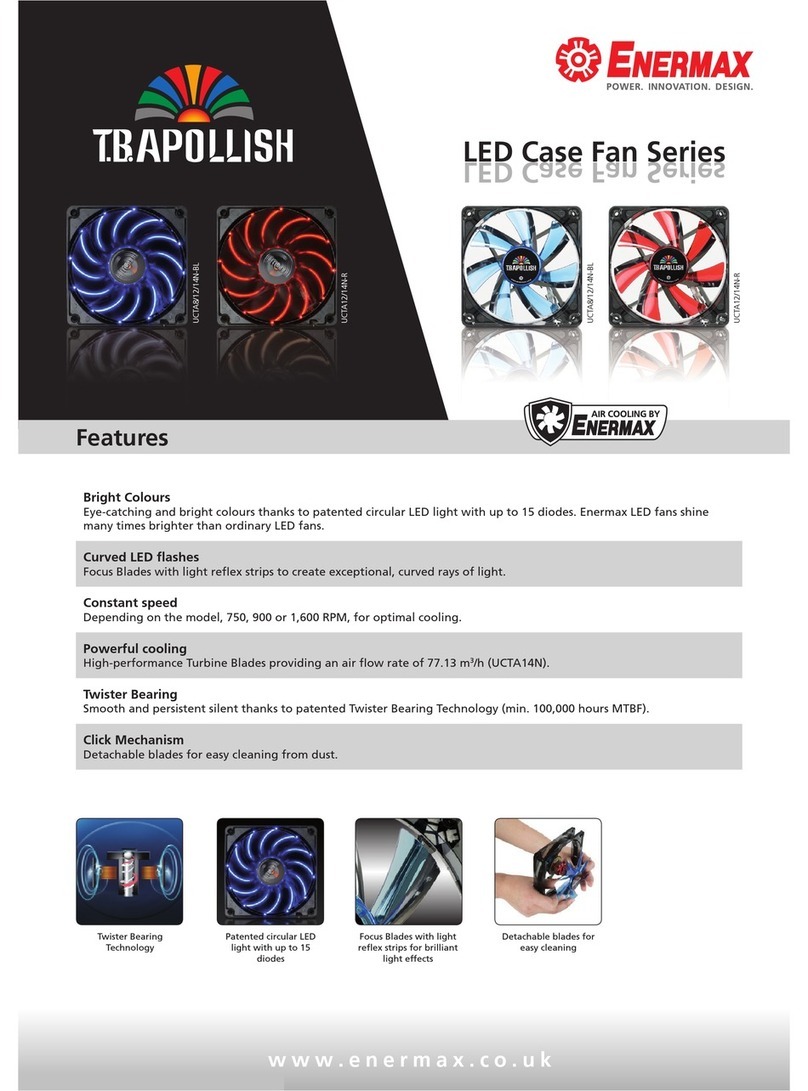
6.3 USB-MODEVM Interface Board
6.4 Program Description
6.4.1 Touch Screen Functions Panel
6.4.2 Data Acquisition Functions Panel
6.4.3 Configuration Panel
Kit Operation
The simple diagram shown in Figure 1 shows only the basic features of the USB-MODEVM interfaceboard. The board is built around a TAS1020B streaming audio USB controller with an 8051-based core.The board features two positions for modular EVMs, or one double-wide serial modular EVM may beinstalled.
For use with the TSC2007, the TSC2007EVM is installed in the topmost EVM slot, which connects theTSC2007 digital control interface to the I
2
C port, realized using the TAS1020B. Because the TSC2007 hasno audio features, the lower EVM slot, which is connected to the TAS1020B digital audio interface, is notused.
As configured from the factory, the board is ready to use with the TSC2007EVM except for SW2, in whichcase at least one of SW2-1, SW2-2, and SW2-3 must be set to OFF.
After the TSC2007EVM-PDK software installation (described in Section 6.2 ), evaluation and developmentwith the TSC2007 can begin.
The touch screen box in this panel is updated when a touch is detected on the touch screen. As the touchscreen is drawn on, the motion on the touch screen is translated into pixels on this box. The softwaretakes X, Y, and Z readings which are shown to the right of the touch screen box. As the touch pressure isincreased, the pixel size increases; a lighter touch results in smaller pixel sizes.
The Z-value displayed is not what is described in the TSC2007 data sheet, because in the data sheetequation, it is assumed that the sheet resistance of the touch screen being used is known. The value usedin this program is calculated by Equation 2 of the TSC2007 data sheet, but without multiplying it by theR
X-plate
resistance. This value ranges from 0 to 3, and larger, with larger numbers representing a moreforceful press on the screen. Using the Maximum Z Value to Display knob, you can set a threshold sothat the program does not display lightly pressed points. This threshold setting helps to eliminate displayof spurious points that may result from touch screen mechanical bouncing.
The display can be cleared by pressing the Clear Graph button on the screen.
The TSC2007 has provision for measuring one auxiliary input voltages (AUX1) and temperature. Thispanel displays the measured values for these parameters. Measurements are updated only when thetouch screen is not being pressed.
Temperature is displayed using both methods described in the TSC2007 data sheet. Using the TEMP0and TEMP1 measurements, a temperature reading with 2°C resolution and accuracy is achieved. Usingonly the TEMP0 measurement, a reading with 0.3°C resolution is possible, but this option requiresknowing the TEMP0 value at +25°C; this would normally be a calibration that the user would perform. Thisprogram assumes that TEMP0 = 600 mV at +25°C.
The TSC2007 can be configured to operate in 8-bit or 12-bit resolution modes. Control over the modeused is selected in this panel.
In the middle of this panel is an indicator light that shows the I
2
C Bus Status. If the TSC2007 isacknowledging the address sent, the light is green; if the TSC2007 cannot acknowledge, the light is red.The address to which the TSC2007 is set is shown in binary format in the box labeled Device AddressA1-A0. The address set here should be "00" when using the TSC2007EVM. Even though the TSC2007has two pins, A0 and A1, for users to select four different I2C addresses, the TSC2007EVm has only afixed address 1001000b, where A0=A1="0", because both A0 and A1 are tied to ground. See theTCS2007EVM schematic provided in this document.
8TSC2007EVM and TSC2007EVM-PDK User's Guide SLAU199 – March 2007Submit Documentation Feedback



